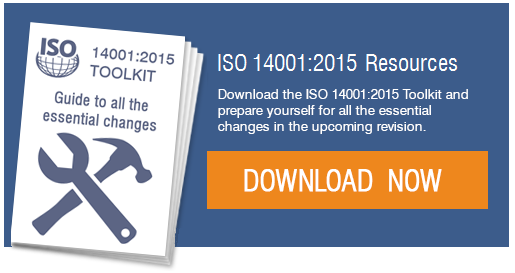Want to contribute to this article?
ISO 14001:2015 extends the previous standard's 'Support' clause to get you to think about the plans and processes you'll need to be able to properly implement your environmental management system (EMS).
In this fourth and final part of our series, we clarify what the revision of the 'Support' clause means for your organisation, and focus on how you might need to adapt to fulfil these new requirements.

Overview
In short, ISO 14001:2015 means you must determine what resources you need for your EMS to work effectively, and then ensure you provide them. "Resources" can mean anything from an employee's skills and knowledge to buildings, equipment and other facilities. You'll need to be able to demonstrate that:
- Your staff are "competent"
- Your communications are transparent and clear
- Your "documented information" is properly controlled
Competence
You must make sure that any employees who could conceivably affect your environmental performance are "competent" – i.e. properly skilled and trained. To demonstrate this, you should:
- Identify the skills and knowledge employees need to be competent
- Provide training where there are shortcomings
- Keep written records of employees' competence in handling environmental aspects
To meet these requirements, you'll need to monitor your employees' competence and make any necessary improvements.
If you're a micro organisation (i.e. a small business with fewer than 10 employees), it may be practical for you to document and monitor your employees' competence on paper or using spreadsheets. In most organisations, however, that kind of approach is too laborious and inefficient. Software such as EQMS Training Manager can pinpoint the types of development your employees need and bring these into line with your corporate goals, including environmental objectives.
EQMS Training Manager highlights gaps in training and ensures that all information is easy to find. It cuts administration costs by simplifying how you manage your training records while making sure that all staff have the level of competence they need.

Communications
Essentially, the updated 2015 standard requires you to develop a communications strategy to plan when, where, how and with whom communications will take place. This includes both internal and external communications.
Internal communications might include raising awareness among your employees about environmental issues, or reporting non-conformances to senior management. External communications could be dealing with complaints or handling media enquiries.
Your strategy should ensure that your communications:
- Include information on your environmental performance
- Cover all levels and functions of your organisation
- Aid your continual improvement by including people who work on your organisation's behalf
- Remain consistent with the EMS
- Help you to comply with all relevant standards and regulations
- Allow your staff to make suggestions for improving your EMS's performance
Documentation
To make sure your staff understand and engage with your EMS, it's essential that you make documented information available to them that explains:
- How the EMS works
- The EMS's scope (which activities and locations the system applies to)
- Where they can find information relating to their particular role(s)
ISO 14001:2015 gives you a duty to properly organise all documented information associated with your EMS. You must develop controls to make sure that the documented information relating to your EMS is:
- Signposted to those who need access to it
- Appropriately formatted and presented
- Adequately protected
- Reviewed and approved
EQMS Document Manager is an effective document management solution that ensures all documentation is correctly controlled, allowing you to easily meet your compliance obligations. It makes sure that users only access a document's latest version and never any inaccurate or out-of-date material. The software reduces the time, effort and resources needed to manage and distribute the information critical to your EMS.
What you should do now
For more on the ISO 14001:2015 revision, download our free toolkit by clicking the link below.









Share your thoughts on this article